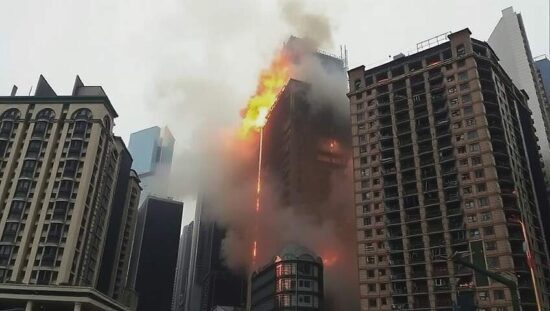A devastating fire swept through a residential complex in Tai Po, Hong Kong, on Wednesday, claiming at least four lives – including a firefighter – and leaving numerous others in critical condition. The blaze, escalated to the highest alarm level (Level 5), engulfed at least five interconnected high-rise buildings within the sprawling eight-block compound housing nearly 2,000 apartments. Video footage captured a terrifying scene of flames erupting from numerous windows as firefighters battled the inferno from aerial platforms.
The rapid spread of the fire was significantly exacerbated by the presence of bamboo scaffolding and tarpaulins surrounding the construction site. These materials, commonly used in Hong Kong for building and renovation projects despite government pledges to progressively eliminate their use in public works due to safety concerns, fuelled the intensity and speed of the conflagration.
While the cause of the fire remains under investigation, the incident has ignited a renewed and intensely critical, debate regarding construction safety regulations and enforcement within Hong Kong. The tragedy exposes a potential systemic failure, not just in the immediate response to the fire, but in the ongoing acceptance and permissive use of flammable materials in densely populated urban areas.
Political commentators are already questioning the government’s commitment to phasing out bamboo scaffolding, pointing to a discrepancy between stated policy and practical application. The disaster is likely to trigger calls for a full-scale review of building codes, stricter enforcement of safety protocols and a potentially accelerated timeline for eliminating hazardous construction materials. The ongoing rescue efforts and subsequent investigation are expected to be intensely scrutinised, with the focus firmly on accountability and preventative measures to avoid a recurrence of this catastrophic event. The scale of the disaster has profoundly shaken the city and raises serious questions about the prioritisation of cost-saving measures versus public safety.





